Physical Address
304 North Cardinal St.
Dorchester Center, MA 02124
Physical Address
304 North Cardinal St.
Dorchester Center, MA 02124
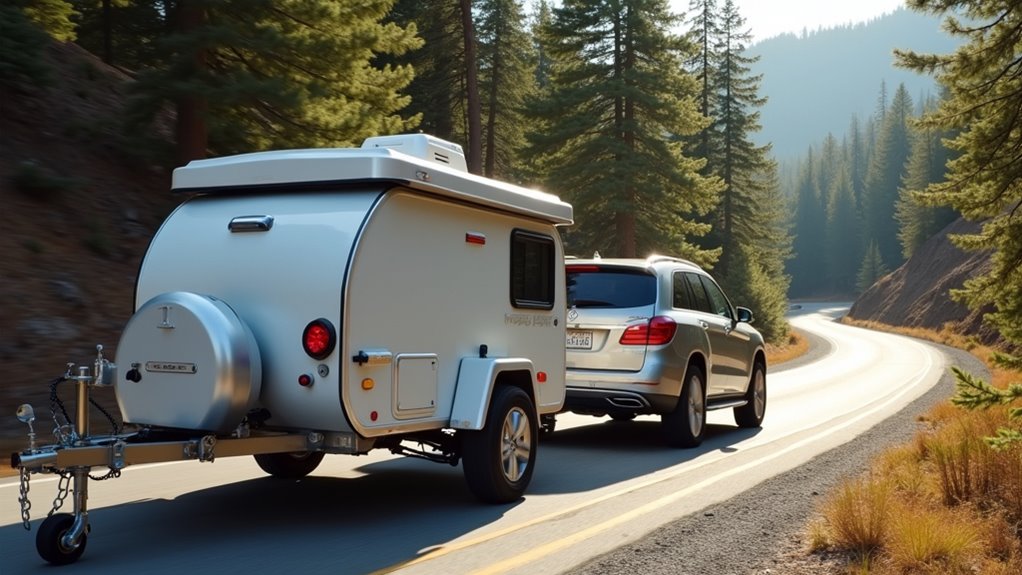
Inexperienced towers can safely hit the road with their pop-up camper by mastering these essential preparation steps and weight requirements.
Just as a skilled pilot wouldn’t take off without a pre-flight checklist, you can’t safely tow a pop-up camper without proper preparation. Whether you’re a first-time tower or a seasoned camper, understanding the essentials of weight ratings, equipment requirements, and safety protocols will make the difference between a smooth journey and a roadside disaster. Let’s explore what you’ll need to master before hitching up your home-away-from-home and hitting the open road.
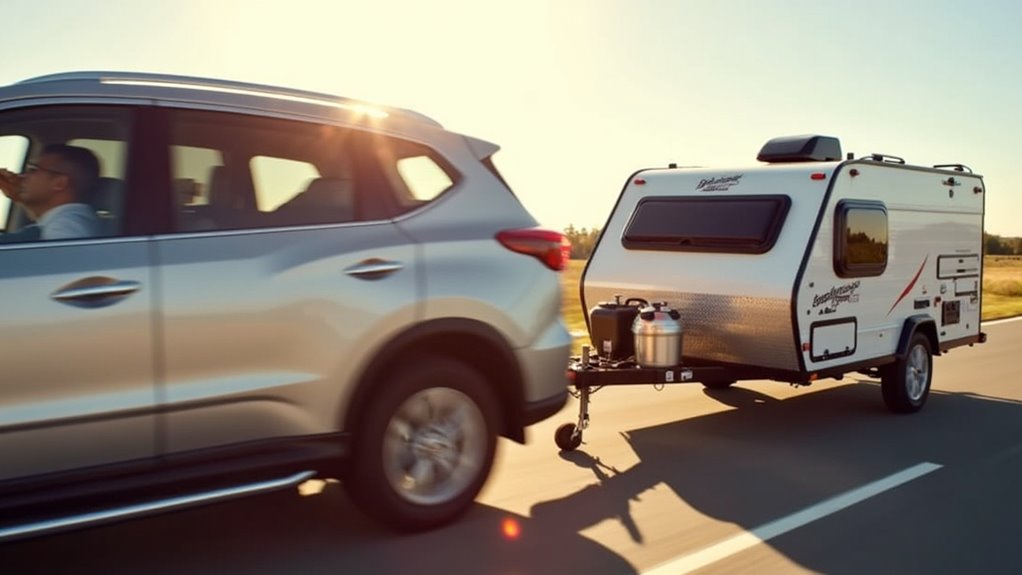
When considering a pop-up camper, understanding its weight specifications is essential for safe and legal towing.
Pop-up campers range from 600 to over 4,000 pounds, with most mid-sized models weighing between 2,000 and 3,200 pounds.
You’ll need to know several key weight measurements. The Unloaded Vehicle Weight (UVW) tells you the camper’s weight without cargo or fluids.
The Gross Vehicle Weight Rating (GVWR) indicates the maximum total weight allowed, including cargo and passengers.
The hitch weight, typically 10-15% of the camper’s weight, affects your vehicle’s handling. Lightweight options like the SylvanSport GO with its 840-pound base weight offer excellent fuel efficiency.
The Cargo Carrying Capacity (CCC) shows how much additional weight you can safely add to your camper.
Understanding these specifications will help you match your camper to your vehicle’s towing capacity.
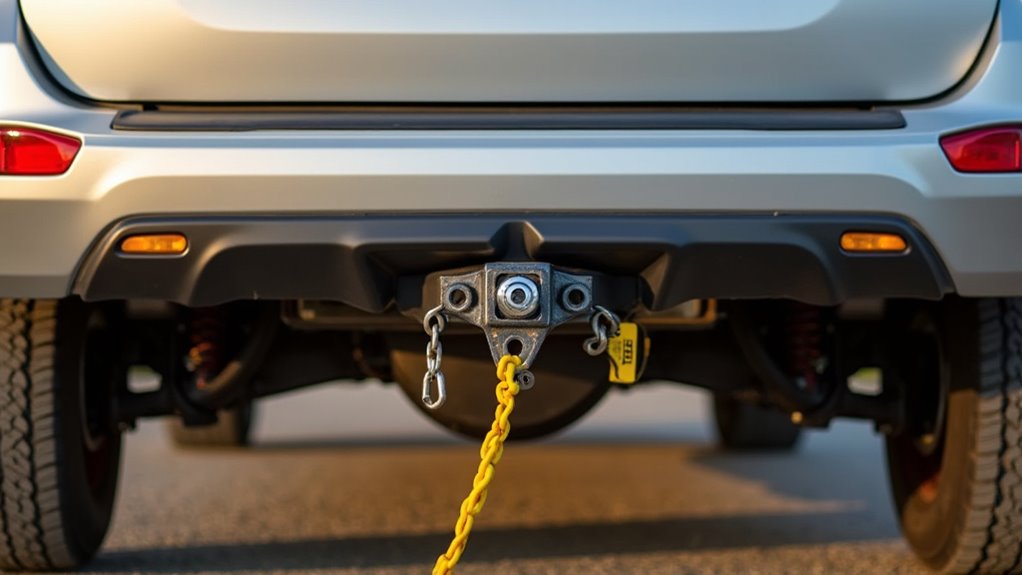
Before hitting the road with your pop-up camper, performing essential pre-towing checks guarantees both safety and peace of mind during your journey.
Taking time for pre-towing safety checks isn’t just about compliance – it’s your ticket to worry-free camping adventures.
Start by inspecting your tires, confirming they’re at the recommended PSI (typically 60 for pop-ups) and checking for any visible damage. Don’t forget to verify that lug nuts are properly torqued. Your towing vehicle should be able to handle under 2,000 pounds for standard pop-up campers.
Test all electrical connections, including brake lights, turn signals, and the breakaway switch. You’ll need to confirm your brake system’s functionality and properly attach safety chains in a crisscross pattern.
Check all fluid levels in your towing vehicle and confirm propane systems are safely secured.
Finally, conduct a thorough walk-around inspection. Raise stabilizer jacks, secure roof latches and canvas, and lock all compartments.
Remember to retract and lock the camper steps before departure.
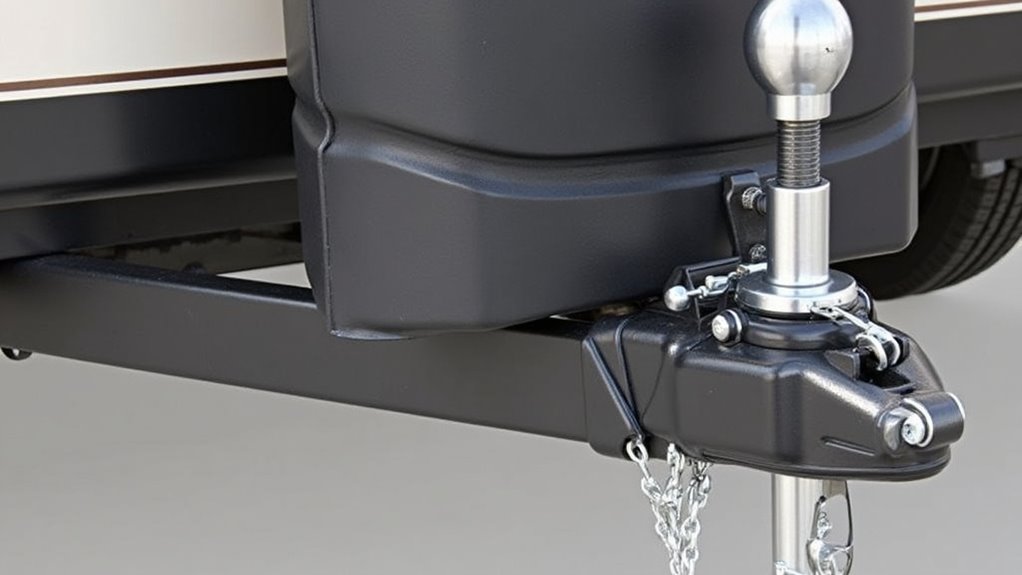
Selecting the right towing equipment marks the foundation of safe and successful pop-up camper adventures.
You’ll need to start by choosing the correct hitch receiver class that matches your camper’s weight rating. Confirm your ball mount and trailer ball are compatible with your pop-up’s coupler size.
Don’t overlook the electrical components – you’ll need a proper wiring harness to connect your camper’s lights to your vehicle. Whether it’s a 4-pin, 5-pin, or 7-pin connector, verify it’s properly installed and functioning.
Consider adding safety accessories like a backup camera or brake controller for enhanced control. For trailers over 3,000 pounds, trailer brakes are recommended.
For peak stability, you might want to invest in a weight distribution hitch and stabilization bars, especially if you’re planning longer trips.
These components help prevent trailer sway and distribute weight evenly across your vehicle’s axles.
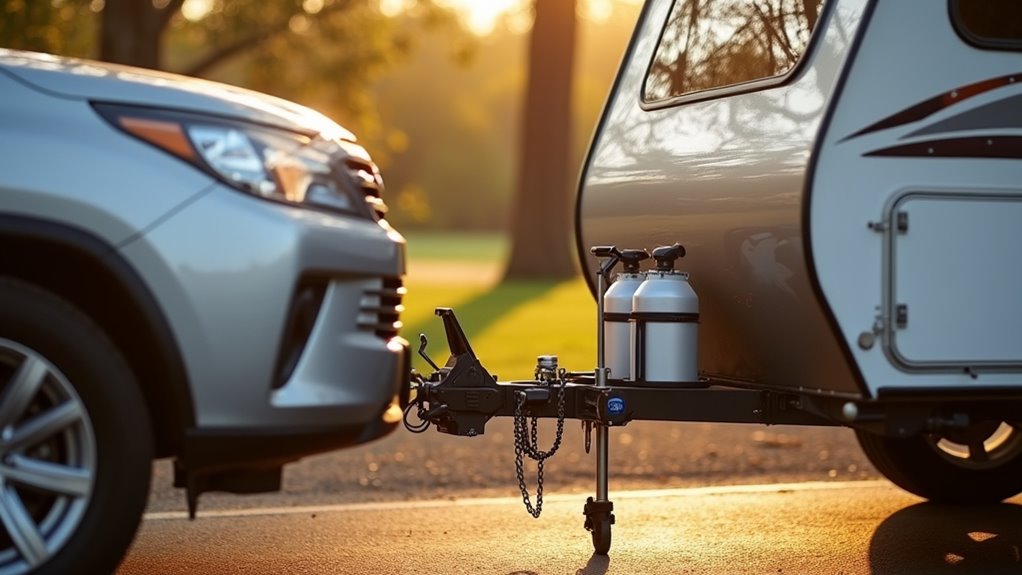
Proper weight distribution serves as the cornerstone of safe pop-up camper towing. You’ll need to maintain 10-15% of your gross trailer weight on the tongue while positioning 60% of the load forward of the axle. A weight distribution hitch helps transfer the load evenly across both your tow vehicle and trailer axles, improving stability and control. Installing an Equal-i-zer hitch system can significantly reduce trailer sway and improve overall towing performance.
Weight distribution is crucial for safe towing – maintain 10-15% tongue weight and use proper hitching to prevent dangerous trailer sway.

Successful towing of a pop-up camper requires mastering several essential driving techniques that’ll keep you and others safe on the road.
Always maintain speeds under 55 mph and leave plenty of following distance to accommodate your increased stopping time. You’ll need to brake gradually and avoid sudden maneuvers that could cause dangerous sway. Before each trip, verify all connections including hitch couplers, safety chains, and trailer lights to ensure safe operation.
Use your extended towing mirrors consistently and signal well in advance of any turns or lane changes. Having proper towing accessories installed will significantly improve your control and safety while on the road.
When heading downhill, shift to lower gears instead of riding your brakes. Don’t forget to perform regular safety checks during your journey, monitoring tire conditions and temperature.
If you’re new to towing, practice in empty parking lots before hitting the highway. Remember, you won’t be able to drive as you normally would – patience and careful attention are your best allies.
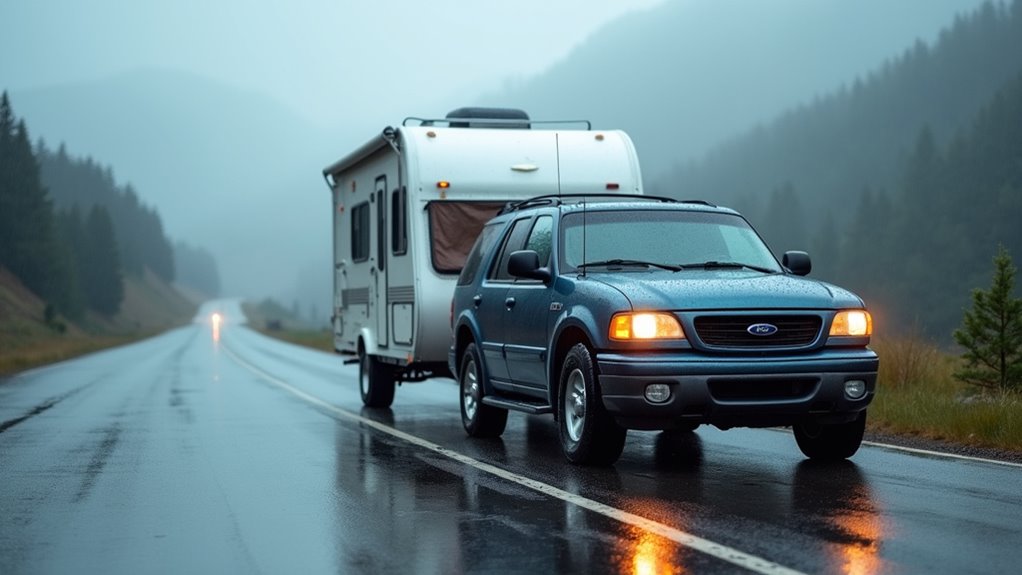
When towing a pop-up camper, weather and road conditions can dramatically impact your safety and comfort on the road. While pop-ups are designed to handle various conditions, you’ll need to stay vigilant and adapt your driving accordingly.
Towing a pop-up camper requires constant awareness and adaptation to changing conditions for a safe, comfortable journey.
Stay informed about the forecast and be prepared to adjust your travel plans when necessary.
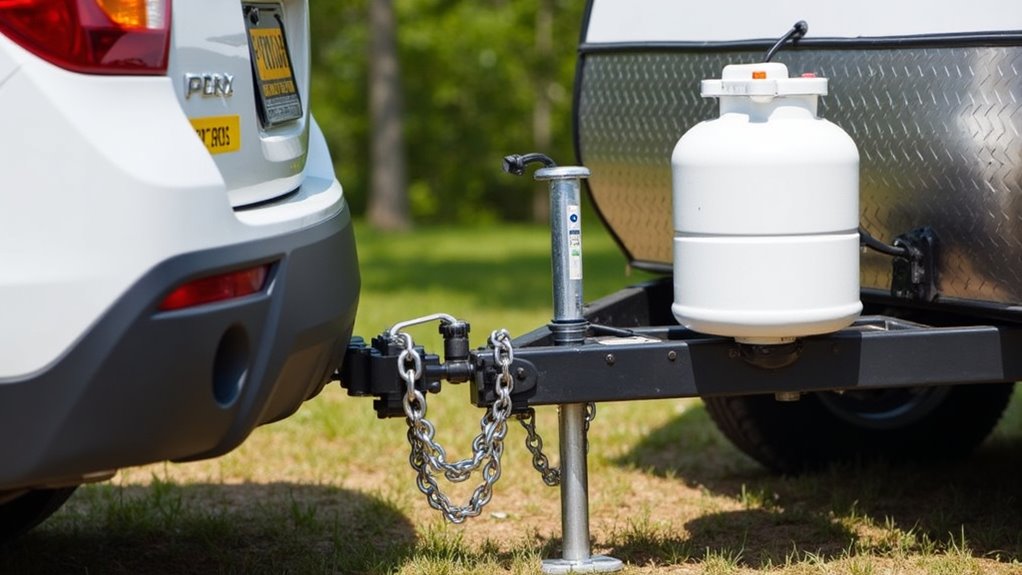
Beyond mastering road conditions and weather challenges, you’ll need to meet specific legal requirements before hitting the road with your pop-up camper.
For most pop-up campers under 10,000 lbs, your Class D driver’s license is sufficient, but you’ll need proper documentation readily available.
Keep your tow vehicle and trailer registrations, titles, and insurance policies on hand. Trailer insurance is required before completing trailer registration in most states. While pop-up campers are typically exempt from combination registration requirements, you’ll still need to comply with safety regulations.
If your trailer exceeds 3,000 lbs, you must have functioning brakes, safety chains, and a breakaway switch.
Don’t forget to check your state’s specific requirements, as some have unique regulations for trailer brakes and speed limits.
Always verify that your towing setup meets weight capacity requirements and maintain proper safety equipment.
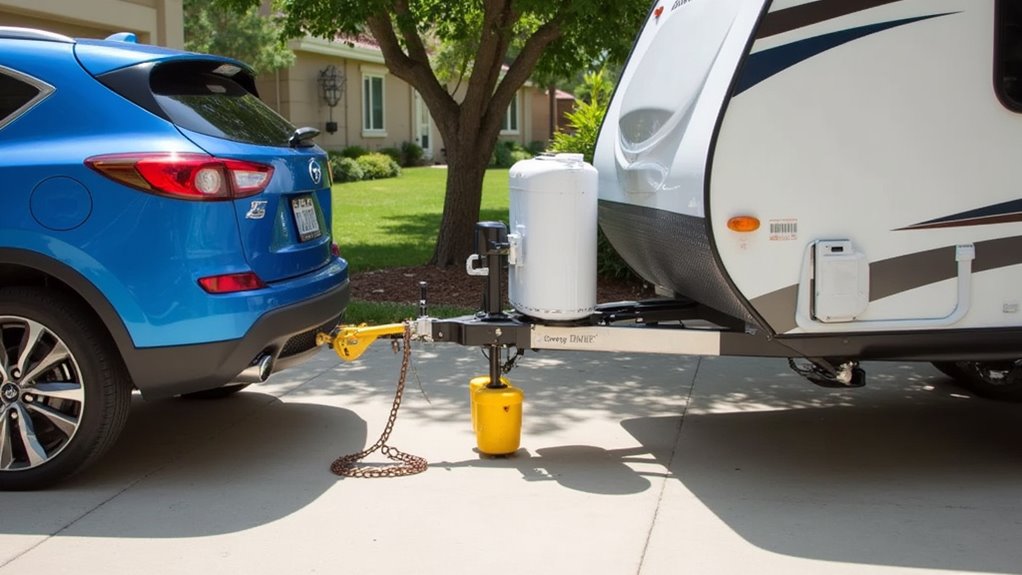
Regular maintenance and safety inspections of your pop-up camper are essential for preventing breakdowns and guaranteeing safe travels.
Before each trip, you’ll need to conduct thorough checks of critical components to protect your investment and keep your family safe on the road.
Remember to document all inspections and repairs for future reference.
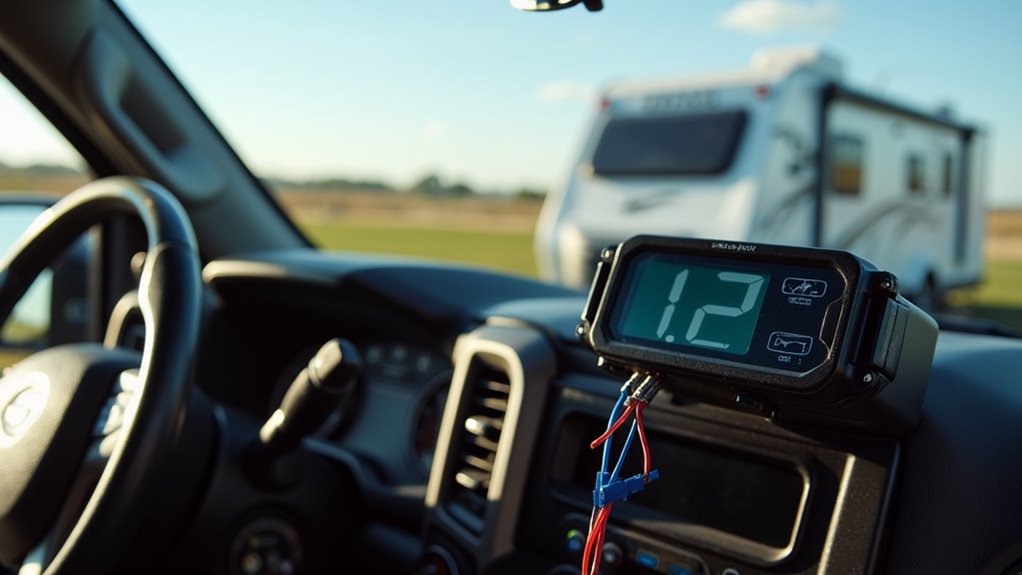
A properly functioning brake control system provides critical safety when towing your pop-up camper. Before installation, disconnect your vehicle’s battery and mount the controller in an easily accessible spot on your dash.
Once installed, connect the controller to your trailer using the 7-way connector, ensuring all wiring is intact and corrosion-free. The manual activation button can help control trailer sway and provide gradual slowing on hills.
You’ll need to calibrate the controller according to manufacturer specifications. Many units self-calibrate, but you should still adjust the maximum output and personal settings.
Test the system by driving at 25 mph in an open area and applying the brakes. If stopping feels too slow, increase the output; if the trailer brakes lock up, decrease it.
Remember to recheck your controller settings whenever you’re hauling different loads or facing new towing conditions.

While towing a pop-up camper brings great adventure, being prepared for emergencies is essential for safe travels.
You’ll need to master critical safety protocols and keep emergency equipment readily accessible to handle unexpected situations confidently. Regularly test your trailer brake system to ensure proper function, especially before descending steep grades.
When you’re ready to hit the open road with your home-away-from-home in tow, remember that successful pop-up camper towing isn’t rocket science – it’s just a matter of being well-prepared. By following proper weight guidelines, maintaining your equipment, and practicing safe driving habits, you’ll be cruising down memory lane with confidence. Keep these tips in your back pocket, and you’ll be camping like a pro in no time.